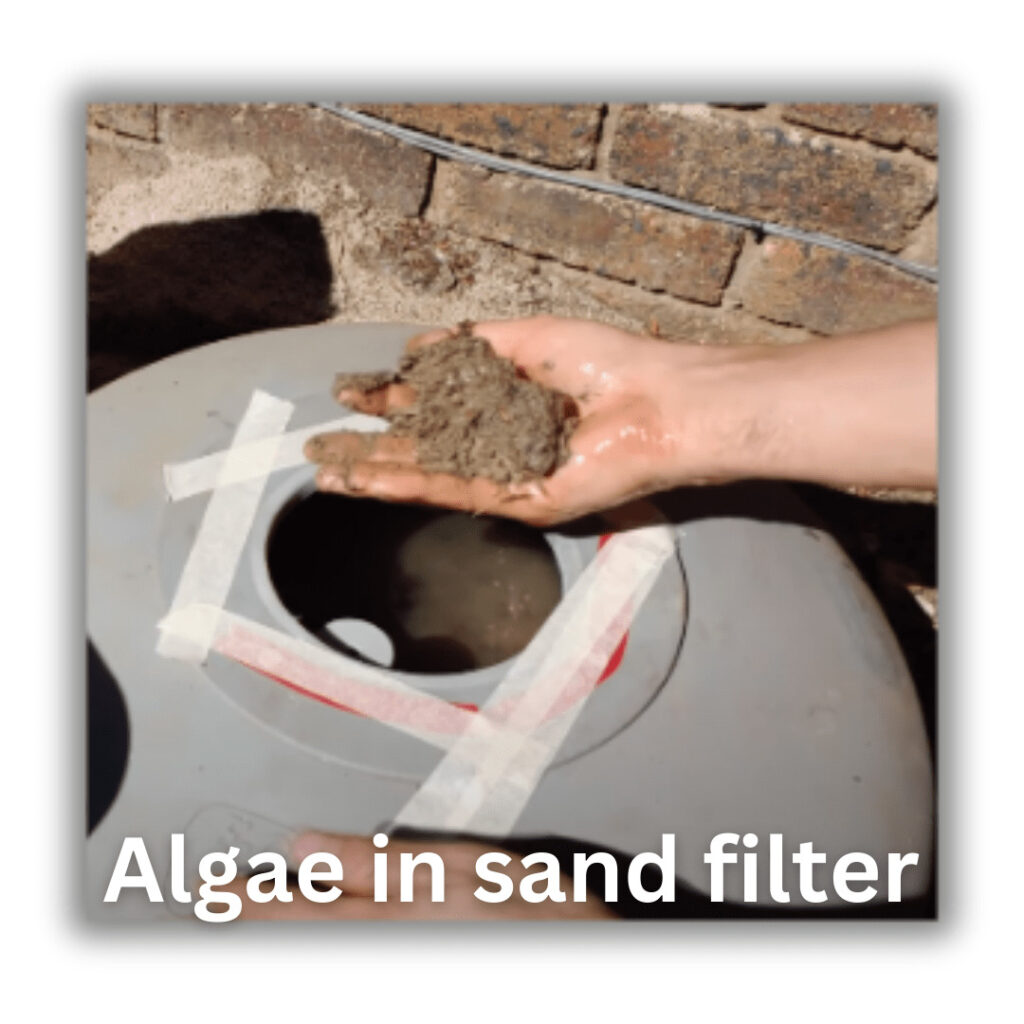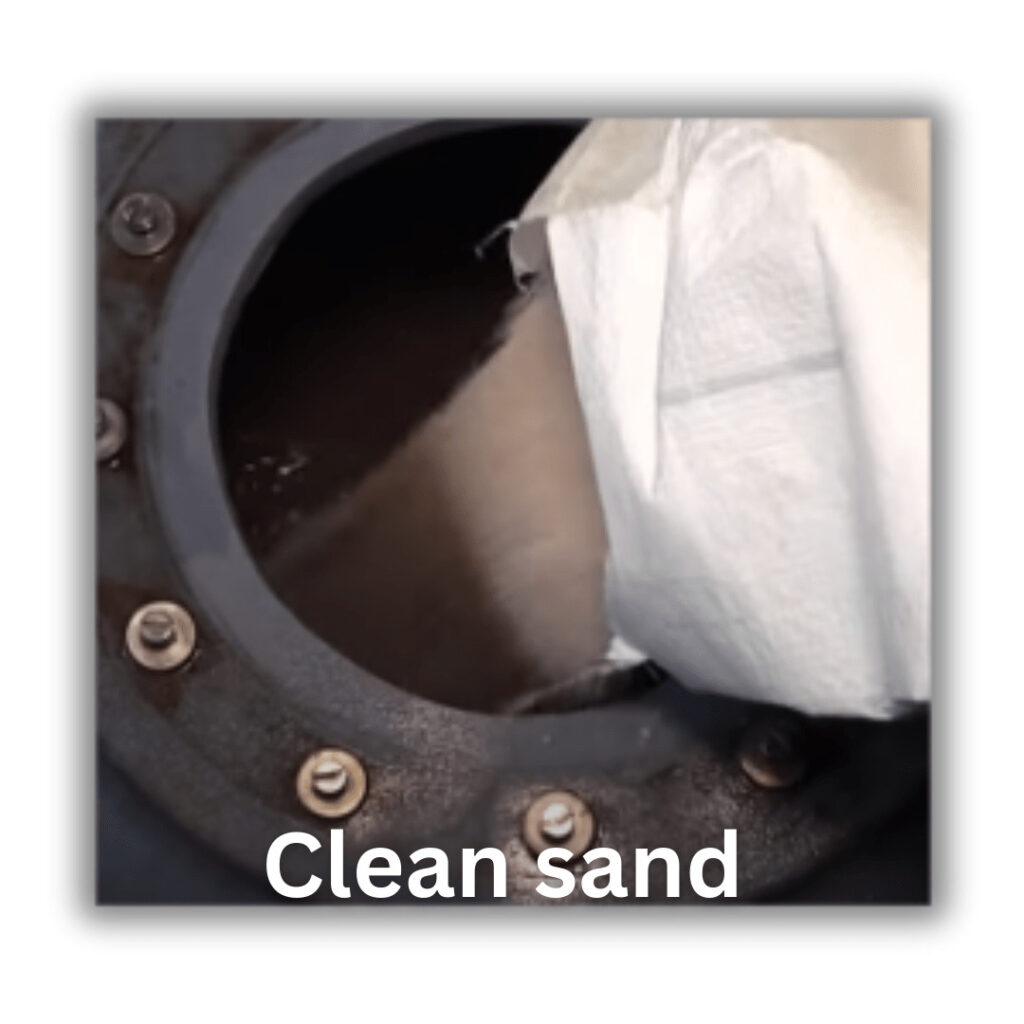I know you are getting confused about how can algae in sand filter. don’t worry that why i am here to help you.
A homeowner’s fantasy comes true with a beautiful, crystal-clear swimming pool. The growth of algae in the water of the pool and, more unexpectedly, inside the swimming pool’s sand filter is a typical annoyance that can transform the ideal situation into a nightmare.
Algae is scary as it can lead to several different health problems and infections in some cases. In this detailed guide, we will go into the world of algae, where it comes from, the purpose of a sand filter, the way algae can get inside of it, detection techniques, and, most importantly, how you can effectively eliminate and avoid algae from damaging your sand filter.
Where does algae come from?
Algae, the green threat to swimming pools, can come from a number of places. Effective prevention and treatment depend on an understanding of its causes.
- Airborne Spores: The algae spores can be transported by the wind and dropped into your swimming pool. From nearby foliage, dust, or even rainwater, these minuscule, hardy spores can make their way into the water of your pool.
- Contaminated pool water: If you’re adding water from a different source without using sufficient filtration or chlorination, it can be contaminated with algal spores. Algae development might also result from neglected pool upkeep.
- Swimmers: Both people and animals with fur on them or in their swimsuits might unintentionally introduce algae to the pool. If the circumstances are appropriate, a tiny amount can cause an algal bloom, as algae grows rapidly and could form colonies from even a little bit of presence.


A Sand Filter’s Purpose
Let’s first examine the issue of sand filters’ principal purpose before exploring the problem of algae.
- Filtration: By circulating pool water over a bed of sand, sand filters are intended to remove contaminants. As a result of the sand’s ability to trap trash, particles, and bacteria, thereby including algae, your pool’s water is left crystal-clear and clean.
- Circulation: Sand filters are essential for maintaining the water’s circulation in pools. To disperse pool chemicals uniformly and avoid pockets of stagnation where algae might flourish, proper circulation is crucial.
How can algae travel pool to sand filter
Algae and other debris are caught in the sand as the pool water flows through the sand filter, but the filtered pool water is released. Algae may soon start to build in your filter if you put off replacing the sand for too long.
How to identify that it is sand or algae?
You can tell if it is sand or algae simply by the mere concept of observation. If it feels false, sticky and reacts weirdly such as showing cloudiness when you interact with it, it is probably algae, or to prove it, you could put it in a water bucket to see if it grows.
Chlorine levels will be mostly affected within a short period of time, the short period of time being overnight for a reference. It might feel really slimy and it could be really annoying to pick it up.
Visual Inspection
A visual inspection is the simplest method of determining the presence of sand. When the filter tank is opened, the sand particles inside are visible as granular material. On the other hand, the presence of algae in the filter is often indicated by a sticky or greenish substance that adheres to the sand or other filter elements.
Texture
When you reach into the pores of the filter and feel the substance, sand will feel coarse and rough to the touch, similar to tiny grains of sandpaper. Algae, on the opposite hand, will feel sticky and slippery and frequently leave a green film on your fingers.
Color
Sand often has a beige, brown, or white tone, and it will keep this color. However, depending on the species and stage of growth, algae can display a range of colors, including green as well as brown hues.
Water Clarity
Check the clarity of the water in your pool. If the water in your pool seems clean but you see what appears to be algae growing inside the filter, it is probably algae. It may be a sign of sand erosion or problems with the sand bed if the water is murky or opaque and particles are going past the filter.
Water Testing
Run water testing to look for chemistry imbalances in the pool. When it comes to sand concerns, mechanical filter faults are usually the cause, whereas inappropriate pH, insufficient sanitizer levels, or excessive phosphates are frequently related with algae growth, signs of low chlorine levels is also proof for algae growth as algae makes the chlorine levels drop rapidly, it can drop it by a huge margin just overnight.
You may determine with accuracy whether sand or algae is the source of problems in the swimming pool’s sand filter and then take the necessary action to address the situation by taking into account certain observant tactile, and water quality signs.
How to Easily Remove Algae from Sand Filter?
- Clean the sand filter for 3 to 5 minutes to make sure that all the physically huge debris/chunk of algae is removed.
- Turn off the pool pump and open the lid, and start adding the filter cleaner to the pool pump.
- Have a bucket of clean water with you to pour into the pump, to make sure that there is no more algae fungi growth in the water.
- Turn the pump off once when the cleaner and the clean water without algae have entered the pump.
- Don’t use the pool for around 12 hours and let the filter soak.
- Backwash the pump and that is all you need to clean your filter.
Should I change sand from the sand filter?
You should change the sand filter in case of algae growth, this is very important to make sure there are no leftover algae in the filter, and apart from that it is necessary to change sand in your sand filter every 3 years to prevent several different issues, but if you get a case of algae growth then it is necessary to change the sand filter, the sand is not safe from getting affected from algae, even if there is no visible proof that the sand got affected, there might be little algae hidden in it, and even little amounts of algae are enough to grow a colony.
How to prevent algae from coming back in the sand filter?
A cautious approach to maintaining your pool and water chemistry is needed to stop algae from re-colonizing the water in your pool’s sand filter system. A crucial sentence addressing prevention measures for algae can be found below:
Maintaining adequate water chemistry is essential to avoiding a resurgence of algae in sand filter system of your swimming pool. To produce a setting less favorable for the formation of algae, regularly check and balance the pH, alkalinity, and sanitizer levels in the pool. Algae are killed and inhibited by enough sanitizer levels, which are typically made of chlorine.
As a preventative step, you should also think about adding algaecide for pool clarifiers, particularly in the warmer months when algae grows more quickly. To clear away debris and avoid jams that can promote algae growth, the sand filter needs to be backwashed and cleaned regularly.
To reduce the entrance of organic debris that encourages the growth of algae, maintain pool surfaces, skimming devices, and baskets clean. Additionally, try to keep the pool out of the sun as much as possible because algae love bright, sunny environments.
Finally, keeping the water flowing through the pool consistently and thoroughly will prevent algae buildup in the filter itself and all around the pool. You can take pleasure in a swimming pool that is crystal clear and free of algae by carefully adhering to these preventive steps.
Conclusion
With the knowledge you receive from this comprehensive tutorial, you can successfully address the issue of algae in the water in your pool’s sand filter, although algae growth is a really annoying thing to deal with, it is also not that hard to get rid of and the precautions can be taken on a daily basis,
if algae growth isn’t taken as a serious factor then it can lead to some terrible problems with your pooling experience, and that may include health issues and skin diseases such as rashes as it kills chlorine which is used a disinfectant and that would cause the rise of pathogens that could lead to a lot of skin irritation. And now you have enough knowledge to know if your pool has algae and what to do to treat it.
You can have an algae-free pool all year long if you are aware of the sources of the growth, how sand filters work, where the algae enters the pool, how to identify it, how to remove it, when to replenish the sand, and how to prevent it. Bid farewell to cloudy water and welcome to stress-free pool enjoyment!
